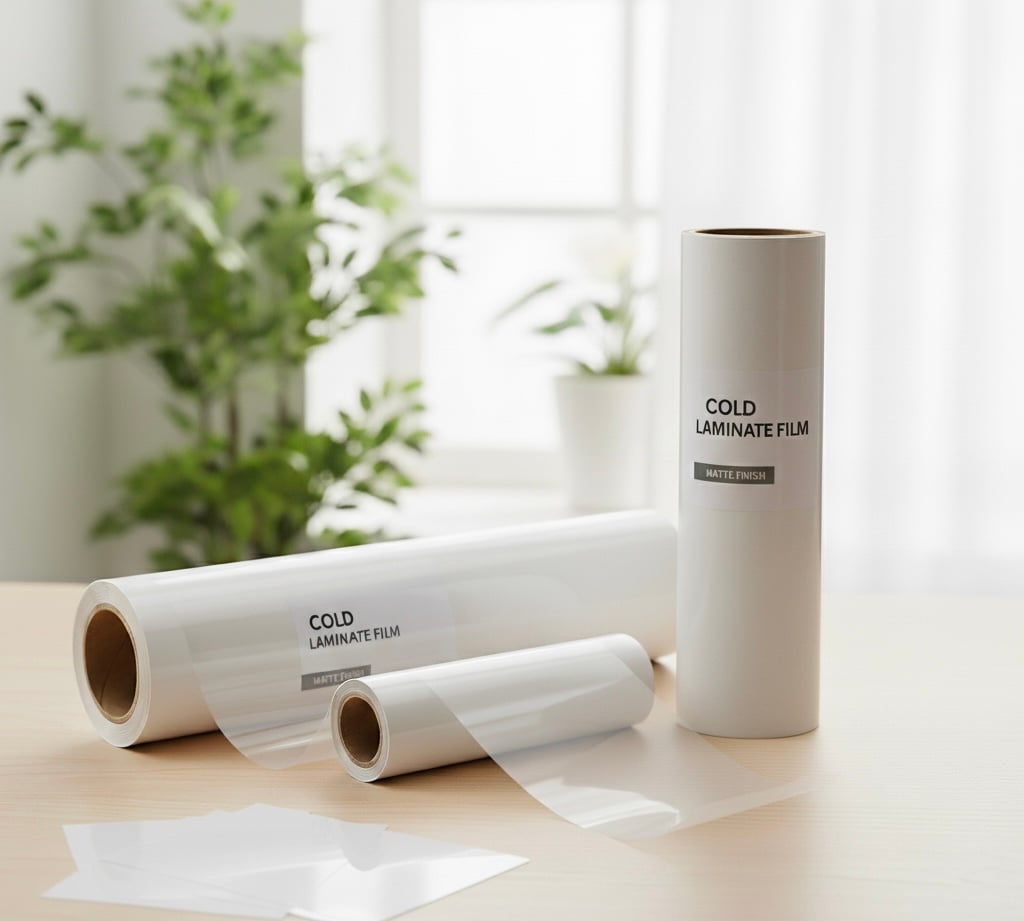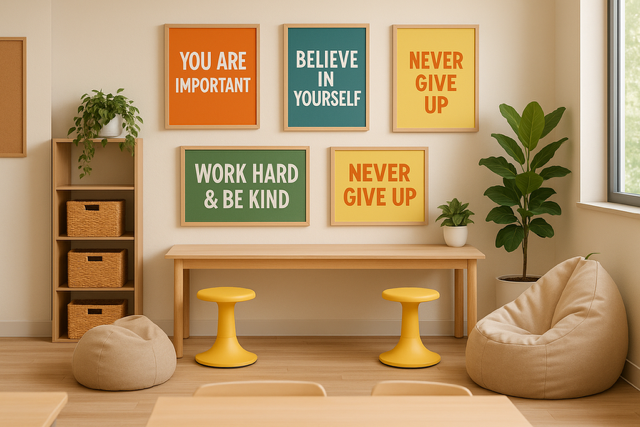
DISCOUNTED EDUCATION PRICING! CALL 1-877-891-8411. We Gladly Accept School Purchase Orders!

As the 2025-2026 school year approaches, teachers are gearing up to transform their classrooms into vibrant, inspiring, and functional learning environments. Classroom decor is more than just aesthetics—it sets the tone for student engagement, fosters creativity, and promotes a sense of belonging. This year’s trends reflect a blend of sustainability, inclusivity, and innovative design, drawing inspiration from nature, technology, and student-centered spaces. Below, we explore the top 10 classroom decor trends for the 2025-2026 school year, offering practical ideas to help educators create welcoming and dynamic classrooms that inspire both students and teachers.
Minimalism continues to dominate classroom design in 2025, emphasizing clean lines, uncluttered spaces, and intentional decor choices. This trend moves away from overstimulating, busy displays and focuses on high-impact, functional pieces that serve a purpose. Think curated alphabet posters, neutral-toned bulletin boards, and multi-use storage solutions. Minimalist decor promotes a calm and focused atmosphere, which is especially beneficial for neurodivergent students who may find overly busy environments overwhelming.
How to Implement: Choose a cohesive color palette (e.g., soft neutrals or muted pastels) and select a few key pieces, such as a sleek calendar display or a versatile magnetic whiteboard. Incorporate storage carts that double as decor, like rolling carts in earthy tones.
Biophilic design, which integrates natural elements into indoor spaces, is a major trend for 2025. Classrooms are embracing botanical-inspired decor, such as eucalyptus-themed bulletin boards, faux vines, and artificial succulents. This trend fosters a calming environment and connects students to nature, promoting well-being and focus. Themes like jungle safaris, woodland adventures, or under-the-sea motifs are also popular, bringing vibrant greenery and natural textures into the classroom.
How to Implement: Hang faux eucalyptus garlands or create a jungle-themed reading nook with leafy green fabrics. Add real or artificial plants to windowsills for a touch of greenery. Consider a nature-themed bulletin board with animal cutouts or a “growth mindset” display featuring floral motifs.
Inclusivity is at the heart of 2025’s classroom decor trends. Teachers are prioritizing decor that reflects diverse cultures, identities, and abilities to create a welcoming environment for all students. This includes posters showcasing diverse historical figures, multilingual welcome signs, and displays celebrating cultural holidays like Harmony Day. These elements help students feel seen and valued, fostering a sense of community.
How to Implement: Create a “We Are One” bulletin board with student photos or artwork representing their unique backgrounds. Use multilingual labels for classroom items (e.g., “pencil” in English, Spanish, and Mandarin). Incorporate books and visuals that highlight diverse stories and perspectives.
Nostalgia is making a comeback, with 90s-inspired decor like pastel checkerboards, smiley faces, and retro school supplies (think pencils and apples) reimagined in modern color palettes. This trend blends playful, familiar elements with contemporary design, creating a fun yet sophisticated vibe. The “Saved by the Pastel” collection by Schoolgirl Style is a prime example, featuring soft pinks, mint greens, and lavender accents.
How to Implement: Use pastel-colored bulletin board borders with checkerboard patterns or hang retro-inspired posters with motivational quotes. Add a “vintage” classroom rug in muted tones to tie the theme together. This aesthetic works well for both elementary and middle school classrooms.
As technology becomes more integrated into education, classrooms are incorporating tech-inspired decor that doubles as learning tools. Interactive bulletin boards with QR codes linking to educational resources, lightbox displays with changeable messages, and digital screens showcasing student work are trending. These elements engage tech-savvy students and align with the rise of AI and digital learning tools in education.
How to Implement: Set up a lightbox with motivational phrases that change weekly, or create a “Tech Corner” with a tablet displaying interactive math games or virtual field trips. Use QR code stickers on bulletin boards to link to lesson-related videos or student projects.
Calming color schemes, such as sage green, soft blues, and muted yellows, are gaining popularity for their ability to create a serene learning environment. These colors reduce visual overstimulation and promote focus, making them ideal for younger students or those with sensory sensitivities. Earthy tones like terracotta and mustard are also trending, especially in boho-inspired classrooms.
How to Implement: Choose a single color, like sage green, for your bulletin board backgrounds and complement it with neutral accents. Use calming colors for seating areas, such as cushions or bean bags in soft blues. Incorporate color-themed posters, like a green-themed “Growth Mindset” display.
Flexible seating and collaborative learning spaces are reshaping classroom design. Teachers are moving away from traditional desks in rows and embracing modular furniture, such as writable desks, standing tables, and cozy nooks. This trend supports student choice and fosters teamwork, aligning with modern educational practices like project-based learning.
How to Implement: Create a “collaboration station” with a round table and colorful stools. Add a cozy reading nook with a small tent or bean bags for independent work. Use movable storage carts to keep supplies accessible and organized. STEM Stations are also a wonderful new trend in a lot of classrooms.
Themed classrooms are a timeless favorite, and 2025 brings fresh ideas like camping adventures, superhero headquarters, and travel-inspired “passport” themes. These immersive environments make learning fun and engaging, encouraging students to connect with the curriculum through creative decor. For example, a camping theme might include a tent as a reading nook, while a superhero theme could feature a “Hero of the Week” board.
How to Implement: Choose a theme that aligns with your curriculum or student interests. For a travel theme, create a “World Explorer” bulletin board with a world map and student “passports.” For a superhero theme, use comic book-style posters and bright colors to energize the space.
Sustainability is a growing focus in education, and teachers are getting creative with eco-friendly decor. Upcycled materials, such as repurposed wood for signs or recycled paper for bulletin boards, are both budget-friendly and environmentally conscious. This trend also teaches students about sustainability and resourcefulness.
How to Implement: Use old crates as bookshelves or create a bulletin board from reclaimed cork. Incorporate student-made art from recycled materials, like paper plate crafts or bottle cap mosaics. Highlight sustainability with a “Green Living” display featuring tips for reducing waste.
Social-emotional learning is a priority in 2025, and classrooms are reflecting this with decor that promotes mindfulness, teamwork, and emotional regulation. Calm-down corners with neutral-toned cushions, inspirational quote posters, and SEL-focused bulletin boards (e.g., “Teamwork Makes the Dream Work”) are trending. These spaces help students manage emotions and build positive relationships.
How to Implement: Create a calm-down corner with a cozy rug, sensory tools, and a feelings chart. Hang SEL posters with messages like “Be Kind” or “You Are Enough.” Use a bulletin board to display student goals or affirmations, updating it regularly to keep it interactive.
To make your classroom decor stand out, consider these practical tips:
Classroom decor is more than just visual appeal—it shapes the learning environment and impacts student outcomes. A well-decorated classroom can:
By embracing these trends, teachers can create classrooms that are both beautiful and purposeful, setting the stage for a successful 2025-2026 school year.
The 2025-2026 school year brings a wealth of exciting classroom decor trends that prioritize student well-being, inclusivity, and creativity. From minimalist designs to nature-inspired themes and tech-integrated displays, these ideas offer endless possibilities for transforming your classroom into an inviting and inspiring space. Whether you’re a seasoned educator or a first-year teacher, these trends provide a roadmap for creating a learning environment that reflects your style and meets your students’ needs. Start planning now, and watch your classroom come to life with these fresh, modern ideas!
Happy decorating, and here’s to an amazing school year!